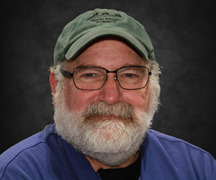I love presentations in the ChipHead Theater at DesignCon. It can be more informal and interactive than a conference room and since there are so many distractions for losing the audience, every presenter has to work harder to keep folks around. When I am doing a live demo on the stage, I often feel like a combination of Ron Popeil and Mr. Wizard (Don Herbert), two of my personal heroes.
At DesignCon 2020, I am presenting three ChipHead Theater events. And Signal Integrity Journal team editorial advisory board (EAB) members are also presenting in the theater. Here’s a preview.
Wednesday Jan 29 11:15: Stump the Experts!
The kick-off presentation for the ChipHead Theater is a “Stump the Experts” panel. As the moderator, I’ve invited four world-class experts to join us on the panel, who all also happen to be members of the SI Journal EAB.
I am pleased to announce our expert panel will have Larry Smith of Micron, Istvan Novak of Samtec, Steve Sandler of Picotest, and Vladimir Dmitriev-Zdorov of Mentor Graphics. I have the easy job of moderating this group. Collectively, between all of us, we have about 200 person-years of expertise in signal and power integrity. If we don’t know the answer to a question, probably no one does.
Think about your most puzzling signal or power integrity question, or the effect you observed for which you have no explanation, or the problem you solved that took days and see if our panel of experts comes to the same conclusion you did. Like, why is there no far end cross talk in a stripline? Which is better, three capacitors of the same value or three different values for decoupling? When is the right occasion to use a ferrite bead? In what cases is a super-thin power and ground dielectric worth the extra cost? What’s the right stack up for a 4-layer or 6-layer board? Any question is fair game.
Wednesday Jan 29 at 4:15 pm, “So you think you understand what a TDR measures?”
In this session, I will do a lecture/demo called “So you think you understand what a TDR measures?” In this, I will sucker you into thinking you understand a TDR measurement and then offer up a few structures that will stretch your intuition. For example: Does it matter which plane the TDR connects in a multilayer board? What is the impact of copper pour that is floating, grounded or grounded in multiple places? How small a discontinuity can we really measure? Can you really see the impact from a 90 degree bend?
The cool thing about doing a demo is that we will actually be able to see the measurements in real time. These examples will challenge your understanding of what a TDR actually measures.
Thursday, Jan 30 11:15am, “Differential Pairs don’t need a return path, or do they?”
In this session, I will do another lecture/demo about “Differential pairs don't need a return path, or do they?” We’ll look at the impact on a differential pair from removing the return path and how to think about an unshielded twisted pair (UTP) cable. When we remove the return path, what stays the same and what do we lose? How do we even measure the differential impedance when there is no return plane? All will be answered through live demonstrations using 4-port TDR/TDT instrument.
Thursday, Jan 30 3:15-4:00, “Untangling Standards: The Challenges Inside the Box”
Standards abound in our world of design, and they can be a blessing, a mystery, or a time sink. This panel of experts affiliated with the Signal Integrity Journal and moderated by Jay Diepenbrock, will examine the challenges of implementing the standards that relate to what’s “inside the box,” specifically PCI Express and DDR5, from simulation, to test, to hands-on building. Be sure to join them for a spirited discussion and bring your questions.
If you are looking for a fun time, be sure to check out these events in the ChipHead Theater. Don’t just attend, participate!


